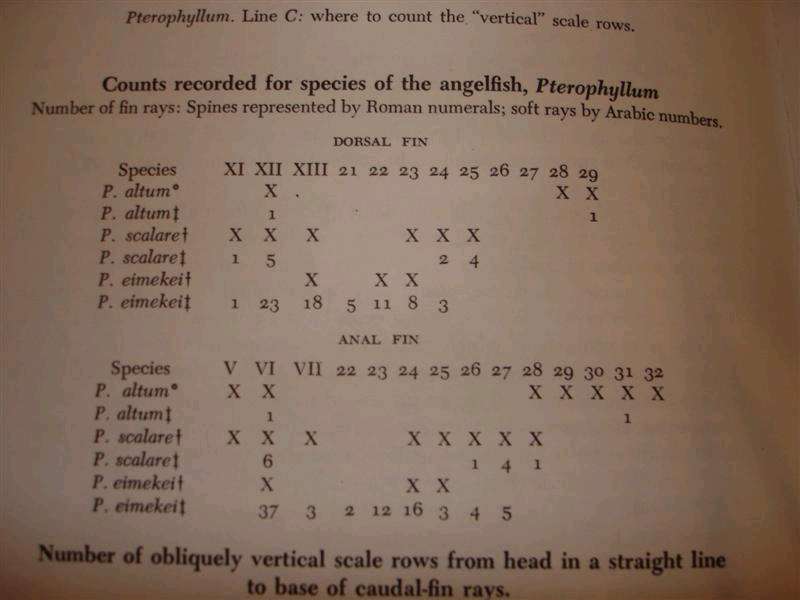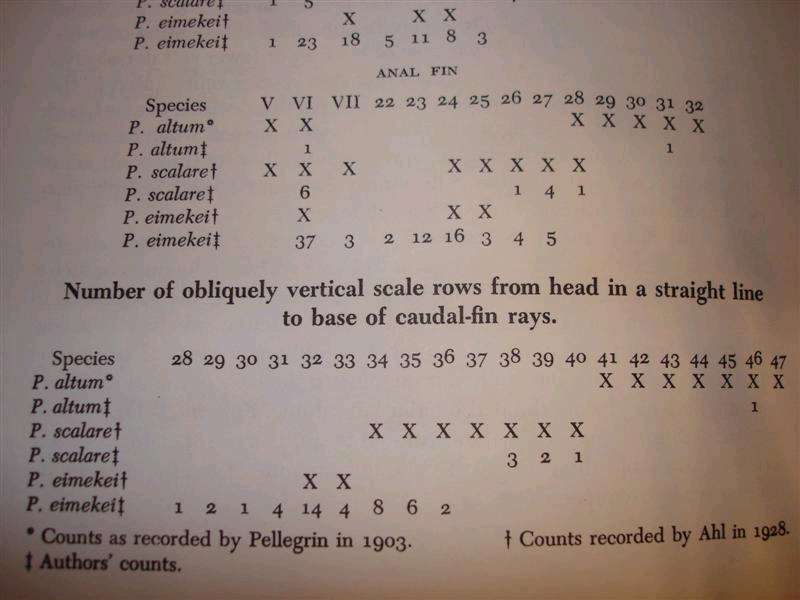The common angel traded today is certainly derived for more than one species, probably all three of them, to some degree. The main confusion is between
Pterophyllum leopoldi and
Pterophyllum scalare, which weren't differentiated by the trade when first imported. So breeders took whatever they had available, and then crossed them over the years to produce all the fancy varieties we see today. Even so-called wild-type angelfish in the trade aren't real
Pterophyllum scalare, even though they look quite a lot like them.
While aquarium books often talk about
Pterophyllum scalare as the common angelfish, that's really not the case, any more than the traded swordtails aren't
Xiphophorus hellerii but are in fact hybrids with other
Xiphophorus species.
Cheers, Neale
Tolak -- Those scans reveal precisely the problem.
Pterophyllum scalare and
Pterophyllum eimekei are the same species, as is (according to Fishbase at least) the species that used to be called
Pterophyllum dumerilii, the "roman-nosed" angel, though I thought it was
Pterophyllum leopoldi. It's actually extremely difficult to identify angelfish species. To get "true" species you really need to get a trustworthy retailer and certainly expect to pay top dollar.
PPS -- The "Peruvian" altum is the one with the tall body shape, but black vertical bands. True altums generally have brown bands. To save me going through the whole thing again, here's a
link to an article I wrote for Tropical Fish Finder.
By way of illustration:
A Peru Altum:
Two True Altums:
Some Leopoldi
A hybrid? i was unaware of that. Do you mean between two species or are you refering to the domestication of the Scalare?






